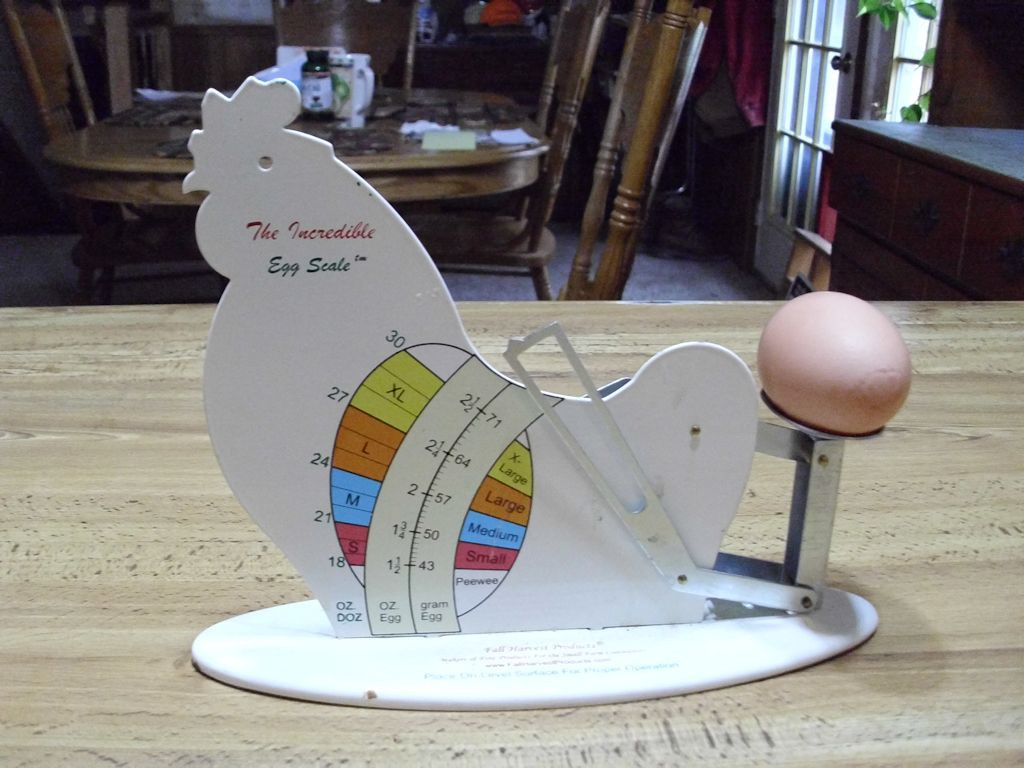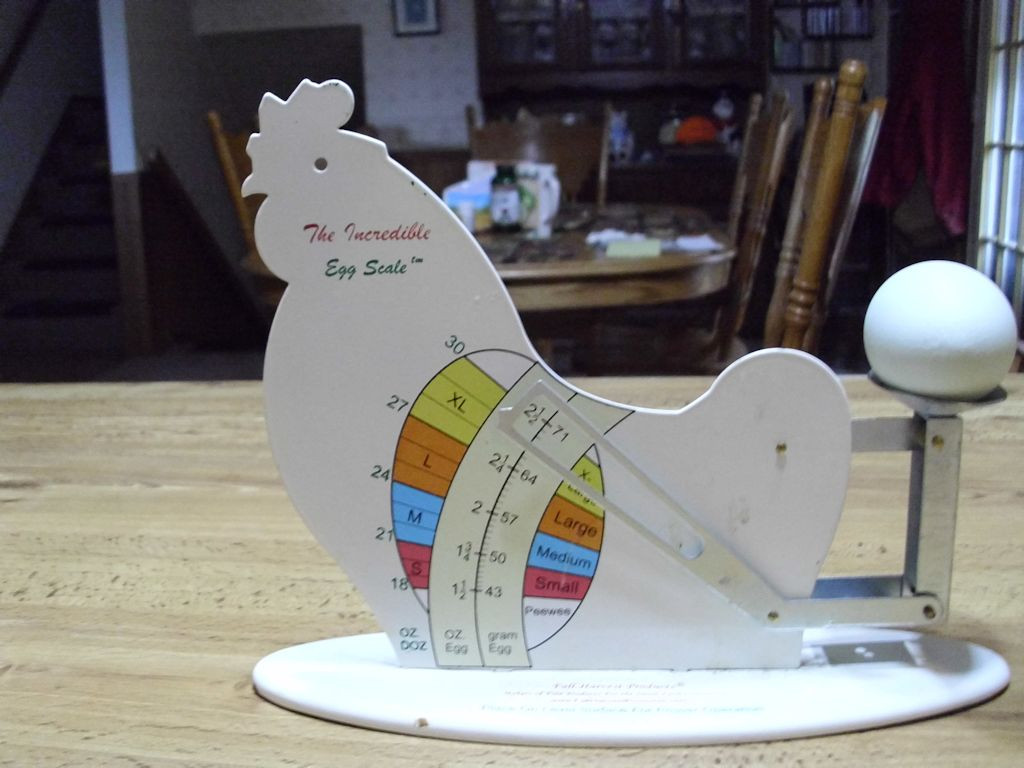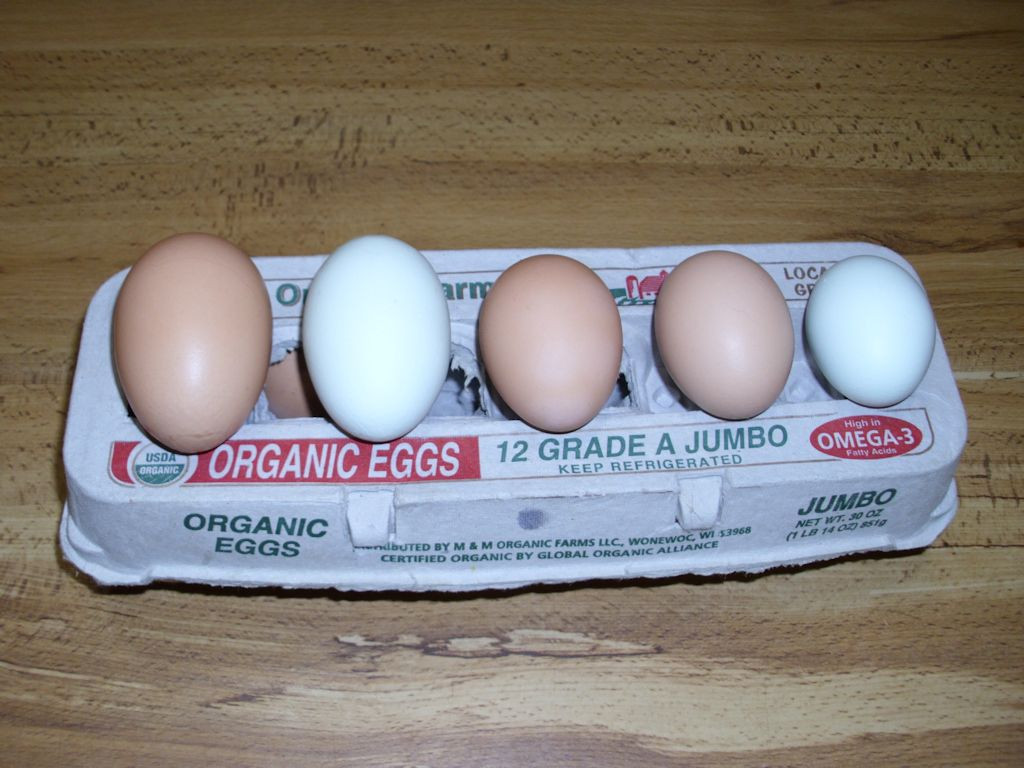The fall brings a series of events that make for interesting visits to the coop looking for eggs. Because I have a mixed flock, there is a combination of pullets and hens out there. The hens haven’t been laying many eggs as of later because they’re molting. The pullet eggs are just now starting to get big enough to really count for something. I still get super jumbo eggs from my Buff Orpingtons. These eggs peg my scale and don’t actually fit well in the carton (even with jumbo cartons, I find I must exercise care in even trying to close it). The Buff Orpingons are the only birds who lay these rather huge eggs.

The Americauna eggs can get quite large too. The advantage of the Americaunas is that they produce more eggs and eat a bit less than the Buff Orpingtons. Plus, they have these really pretty blue eggs.

At this point, I’m getting eggs in every possible size. You can see the difference in sizes from small on the right to super jumbo on the left. The eggs are always measured by weight. In addition, I check my eggs individually, so a carton that is listed as having large eggs has all large eggs in it (when you buy eggs in the store, the eggs are measured by overall carton weight, which means that you might have a mix of medium, large, and extra-large eggs in a single carton).

Even though the medium egg (second from right) looks similar in size to the large egg (directly in the middle), they weigh differently. It’s not always easy to tell just by looking at an egg how much egg you’re actually getting. Of course, the size of your egg can affect the outcome of a recipe (which is why I’ve gone to weighing my eggs as described in Pullet Eggs and Cookies. Let me know about your experiences with various egg sizes at [email protected].
